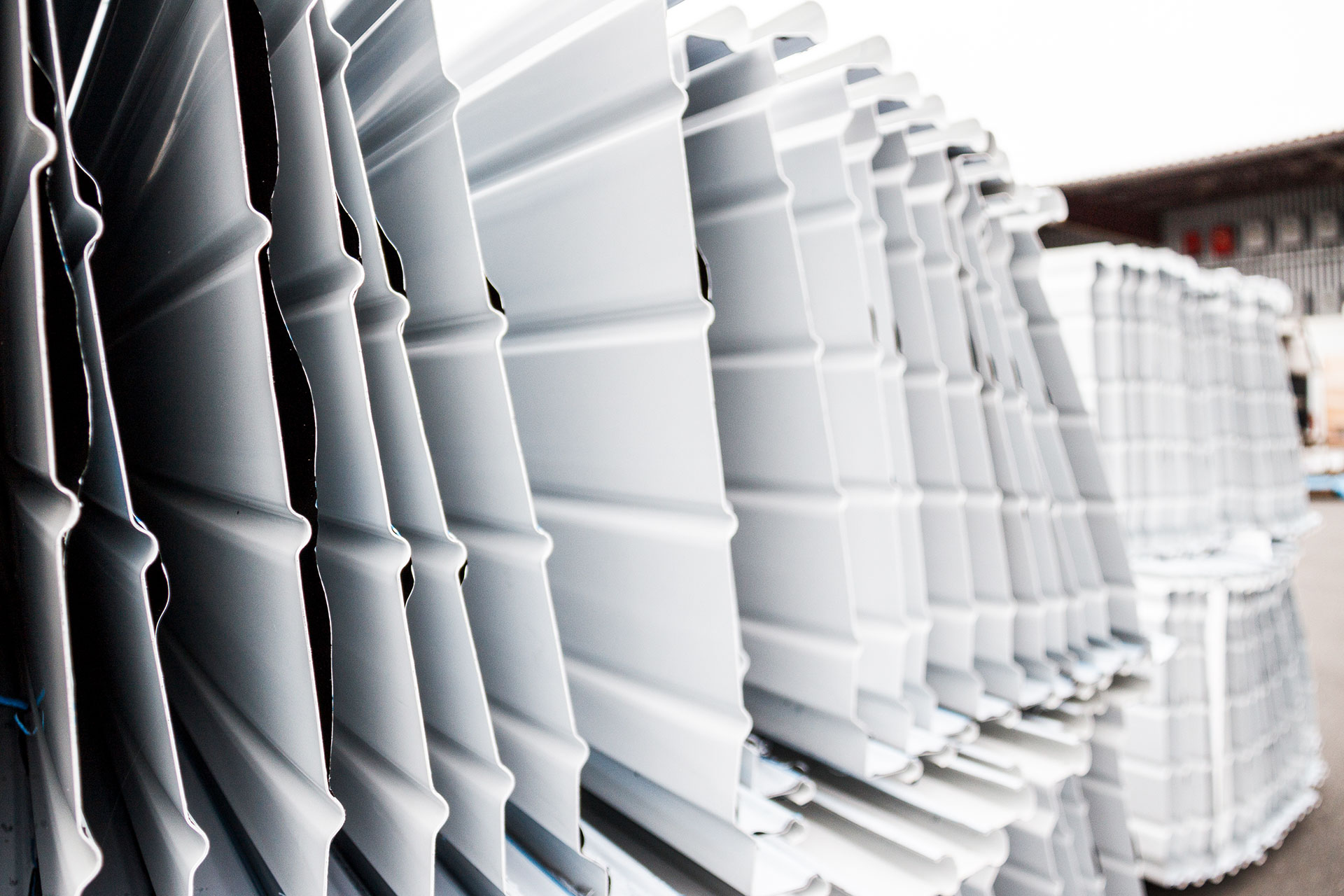At a time when sustainability is playing an ever greater role in the construction industry, aluminium is increasingly coming into focus as a building material. However, there is often considerable disagreement about the extent to which aluminium is actually sustainable. As a company that supplies roofs and façades made of metal, and aluminium in particular, BEMO is aware of its responsibility for a sustainable future. In 2023, we delivered the first standing seam roof made of 100% recycled aluminium and proved it: Aluminium is very much sustainable!
What is the criticism of aluminium?
Although aluminium is the most common metal in the earth’s crust, it only occurs in bound form. Mining bauxite and processing and refining it into raw aluminium are particularly harmful to the environment and energy-intensive. However, to conclude that aluminium is problematic as a building material is too simplistic. In contrast, the recycling of aluminium consumes only 5% of the energy required to produce primary aluminium from ore.
Advantages of aluminium as a building material
Aluminium offers numerous advantages as a building material, making it a preferred choice in construction. Its lightness reduces the overall load of structures and facilitates handling and installation. Aluminium is also extremely robust and corrosion resistant, which increases the longevity and maintainability of structures: 75 percent of the aluminium ever produced is still in use or in circulation!

Another important advantage is the excellent recyclability of aluminium: it can be recycled almost infinitely without any loss of quality. In combination with the right substructure (e.g.: thermal bridge-free TEKOFIX-A++ brackets), aluminium roofs and façades massively reduce energy costs. In addition, aluminium has a long service life, even decades in the construction industry: our standing seam roofs last for more than 50 years and are absolutely low-maintenance. This combination of sustainability, strength and efficiency makes aluminium an ideal material for modern, environmentally friendly construction projects.
Roof made from 100% recycled material

Considering all the advantages of aluminium as a building material and with a critical eye on the production of primary aluminium, constant progress is being made in aluminium technology and manufacturing processes. This includes the development of new alloys that reduce resource consumption and the promotion of recycling technologies. Companies are increasingly relying on transparent supply chains and sustainable procurement practices to further minimise their environmental impact.
In 2023, BEMO successfully delivered the first standing seam roof made of 100% recycled aluminium for a children’s daycare centre in Bavaria as a development partner of an innovative partner from Norway. During the construction of the project, all materials were rigorously tested by an energy and sustainability consultant. Read the detailed project report (in German) including an interview with the architect here:
Looking to the future: the aluminium paradox
Aluminium made from 100% recycled material is definitely a revolutionary development in the construction industry. The advantages in terms of environmental protection, resource conservation and energy efficiency are undeniable.
However, this approach alone is not enough to meet the global demand for aluminium in the construction industry. Paradoxically, the longevity of aluminium leads to a low return flow into the material cycle. This makes it necessary to consider other alternative approaches.
Materials with lower recycled content, such as 40% or 75%, also offer significant sustainability benefits. They significantly reduce the ecological footprint compared to purely new materials and are already available in larger quantities today.
Holistic approach for sustainable building envelopes
In addition to the sustainable choice of materials, other factors are crucial for creating environmentally friendly building envelopes. The material and construction method of the substructure as well as the selection of locally sourced and manufactured materials can significantly reduce the ecological footprint by shortening transport routes and minimising energy consumption. It is also important that the materials used can be recycled and reused at the end of their life to save resources and reduce waste.
The integration of energy-efficient technologies such as solar panels, the use of modular construction processes and recyclable building materials as well as the planning of green roofs and green façades also contribute to sustainability. The future of construction will be characterised by the increased use of recycled materials. BEMO offers advice and solutions to shape a sustainable and responsible construction industry that fulfils the needs of the present and conserves resources for future generations.








